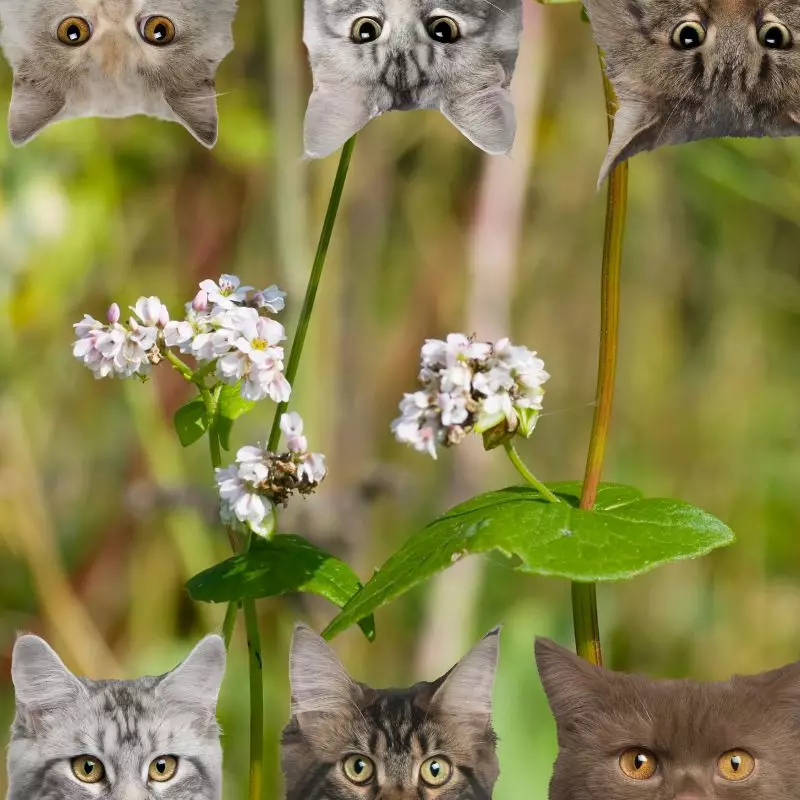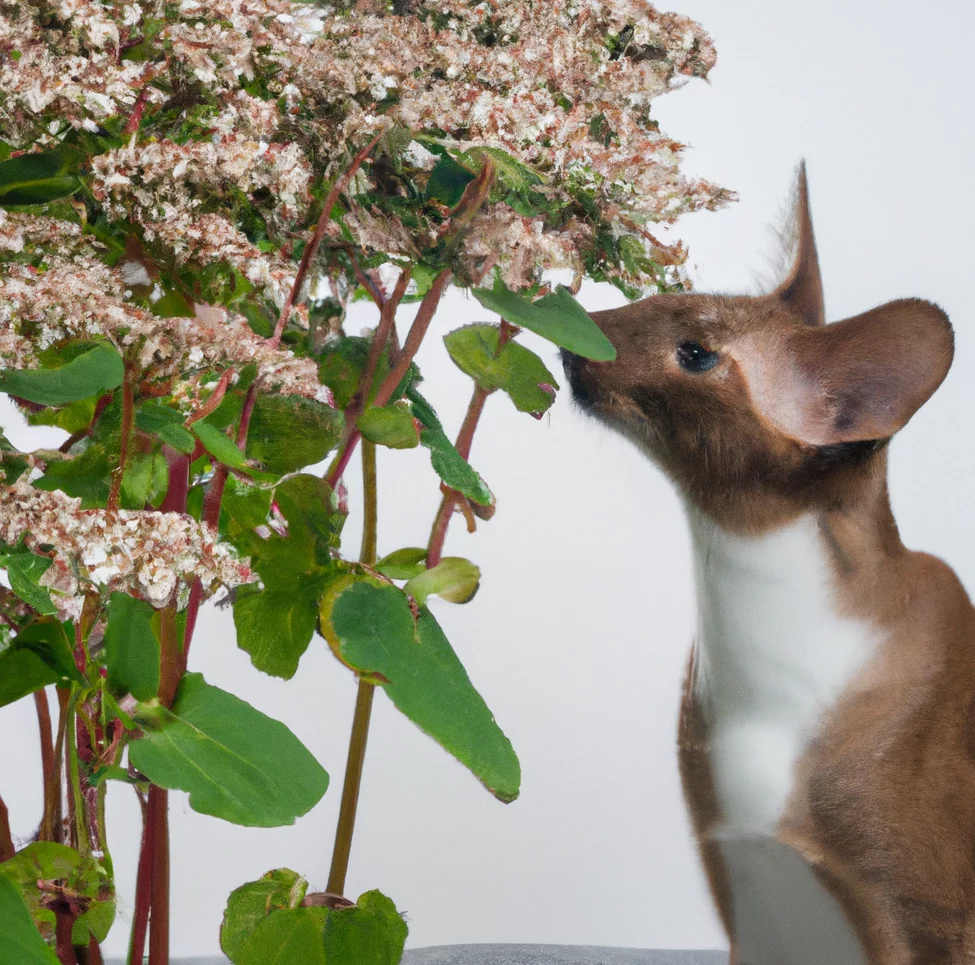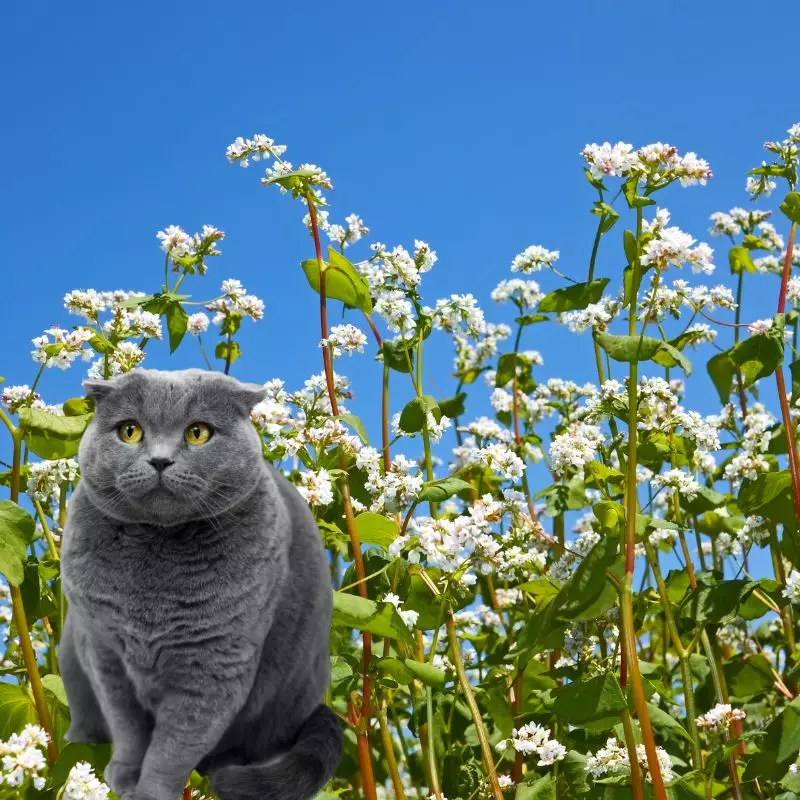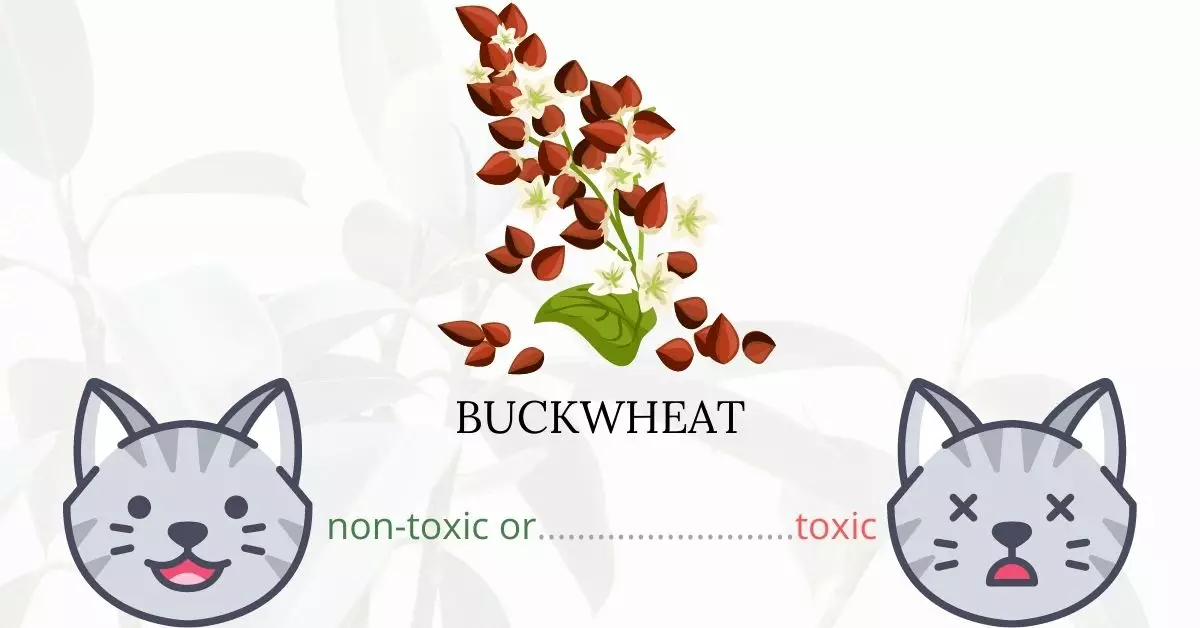Yes, buckwheat can be toxic to cats. Buckwheat, a grain-like seeded plant often utilized as a cover crop, contains fagopyrin, a phototoxin. This means that if cats are exposed to buckwheat, they can become photosensitized, potentially leading to skin irritation, rashes, and ulcerations.
To ensure the precision and relevance of this article, we collaborated with a team of experienced DVMs (doctors of veterinary medicine). Their valuable insights allow us to present accurate and current information about the potential dangers of various plants, in this instance, buckwheat, and their effects on our feline companions. Additionally, our findings are supported by extensive research from high-authority websites such as ASPCA and PetMD.
Clinical Signs of Buckwheat Poisoning in Cats

Buckwheat, while recognized for its health benefits to humans, poses a potential risk to cats when ingested or contacted. It’s not uncommon for people to grow buckwheat sprouts in their gardens or indoors, making it accessible to curious felines. Beyond direct consumption, cats might encounter buckwheat through its processed forms. The leaves and stems of the buckwheat plant are often milled into flour for inclusion in both human foods and cat treats. However, it’s crucial to note that a substantial quantity of buckwheat would need to be ingested to cause severe adverse reactions in cats. Here are some clinical signs of buckwheat poisoning in cats, along with explanations for their occurrence:
- Burning Sensation: This discomfort arises due to the phototoxic compound, fagopyrin, found in buckwheat. When it reacts with the cat’s skin, especially under sunlight or UV exposure, it can cause a pronounced burning sensation.
- Excessive Itching: The presence of fagopyrin can lead to photosensitivity in cats. This increased sensitivity can trigger itching, urging the cat to scratch the affected area continuously.
- Skin Rashes: Continuous exposure or contact with buckwheat might cause allergic reactions or inflammation on the cat’s skin, leading to rashes.
- Temperature Sensitivity: The phototoxin in buckwheat can amplify the cat’s sensitivity to temperature variations, especially when exposed to direct sunlight. This means areas exposed to buckwheat can feel especially warm and uncomfortable for the cat.
- Ulcerations: Persistent contact or ingestion can lead to more severe reactions, like ulcerations. These are open sores that may develop on the skin due to prolonged irritation or exposure to the toxins in buckwheat.
Should you notice any of these signs in your cat after potential exposure to buckwheat, it’s vital to consult with a veterinarian immediately.
First Aid and Treatment of Buckwheat Poisoning in Cats

Usually, symptoms of buckwheat poisoning will not bother you urgently. Nonetheless, it is still better to consult a veterinarian when your cat is manifesting any of the aforementioned clinical signs of buckwheat poisoning.
Itching and irritation can be relieved by bathing the cat with special, approved shampoos or applying ointment to the afflicted parts of the skin. A course of antibiotics may be suggested by the veterinarian if the ulcerations on the skin are caused by a bacterial infection. These will eliminate the dangerous germs from the cat’s body and avoid a systemic infection. The duration of a prescription is usually one to four weeks.
Recovery from Buckwheat Poisoning in Cats

The redness and rashes on the cat’s skin will usually go away within a few hours of stopping the consumption. The general inflammation on your cat’s skin may take a few days to go away. If a bacterial illness was discovered, a follow-up appointment may be required to check that the antibiotics have completely removed the germs from the cat.
Prevention of Buckwheat Poisoning in Cats
If you were able to determine that buckwheat is the source of your cat’s skin problems, make sure to avoid any foods or treats that contain flour. It is also advisable to get rid of any buckwheat sprouts that have emerged in your home or garden. If you keep your cat occupied inside your house, it will minimize the chance to get to the plants in other people’s gardens or around your neighborhood.
If you love plants but have cats at home, check out these lists:





